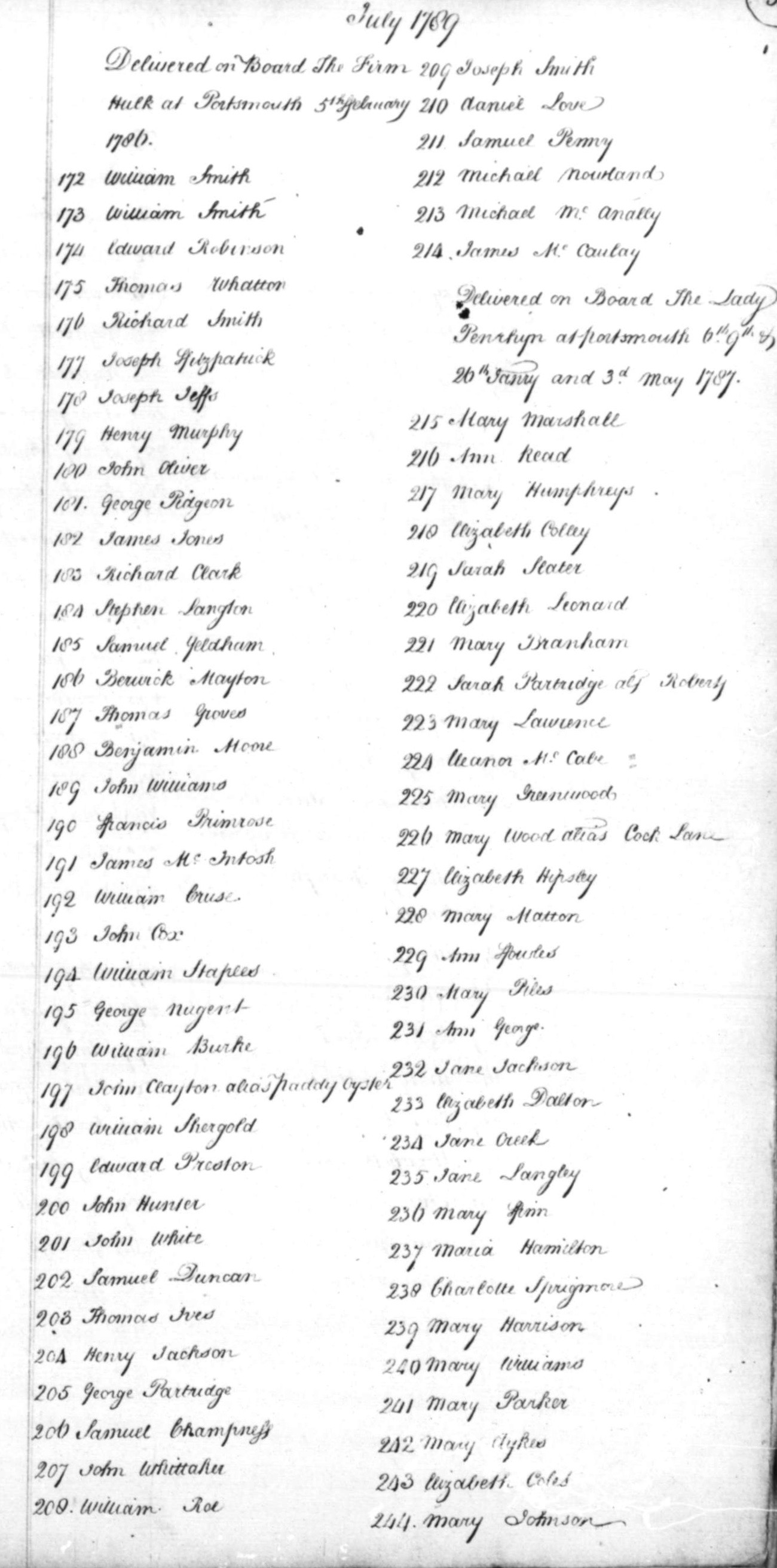Context Matters: A Data Critique of the Middlesex Convicts Delivered For Transportation 1785-92
Joshua Porter

Rows upon rows of names line the spreadsheet. In total there are fifteen-hundred and fifteen names listed and all of them are prisoners. First name, last name, maybe an alias, sex, the date that the prisoner was transferred, and to where. Fifteen-hundred and fifteen names in a column, dating between 1785 to 1792 in London, England. These prisoners and the accompanying document would likely have limited historical value if looked at in a vacuum. However, the context of these prisoners matter. Their role would build a nation and these names would become founding members to a new country.
The dataset is simple. Each row lists the prisoner number, the prisoners first and last names in separate columns, their perceived sex, any known aliases, the date of delivery, who they were delivered to, to where, and to which ship or hulk. The additional information provided is the session or book the record was taken from and sourcing for each row. The sourcing is a link to the actual digital scanned page. The scanned page shows the how each column is sourced. Each row does not include the destination columns, the perceived sex, or the delivery date. Instead these are provided by a heading followed by the list of names. These headings give the context and the importance of the record which is lacking from the actual data set.

The heading, not included in the data set but part of the original digitized scanned document, states that the following, ninety-nine female prisoners were to be “Delivered on Board the Lady Penrliyn at Portsmouth 6th. 9th & 26th Janry and 3d. May 1787.” The Lady Penrliyn or Penrhyn, set sail from Portsmouth, England on May 13, 1787 as part of “The First Fleet” to Australia, establishing the first British colony on the continent. The data set is not simply a prisoner transfer chart, but instead a document detailing the names of the prisoners that would form the colony of Australia.
Taken on its own the dataset does not reveal its importance, instead looking at the original document provides a context that is lost in just rows or columns. With that additional information, such as the exact name of the ship that the prisoners were being transferred, one can discover the importance of the piece. One could then drill down into the data and discover if there was patterns in familial names, such as perceived ethnicity, to then get a better picture of the makeup of the first penal colonists in Australia. Context in regards to this data set means that a simple “prisoner chart” becomes a record of founding colonists, which then opens up more opportunity to use the data. By splicing out the headings, the creator of the data set obfuscates the importance of the data set. The author did not include the Penrhyn in the data set. Only by cross checking the original did that ship name reveal itself and in doing so brought out a whole different meaning to the data set. For this data, context matters, and small details matter, even if does not congeal with the layout of the data sheet.